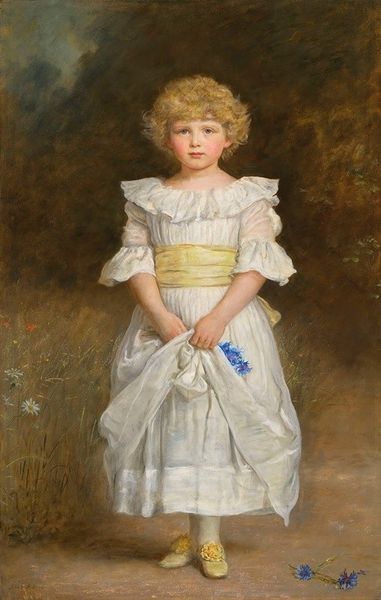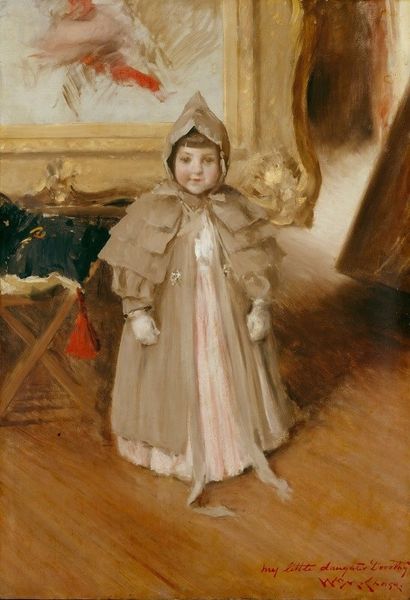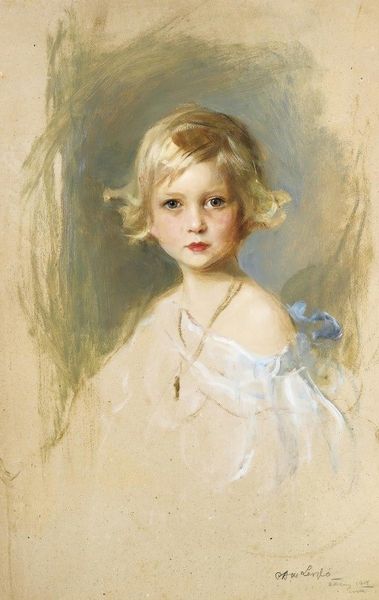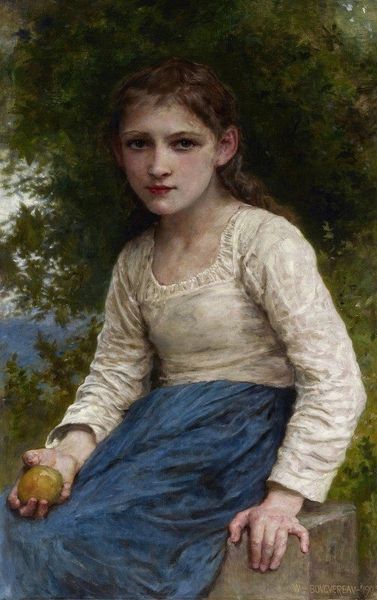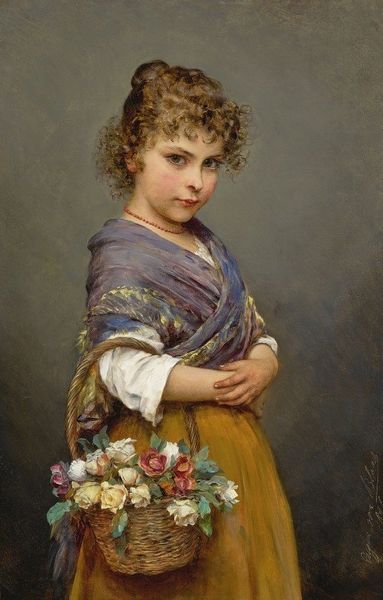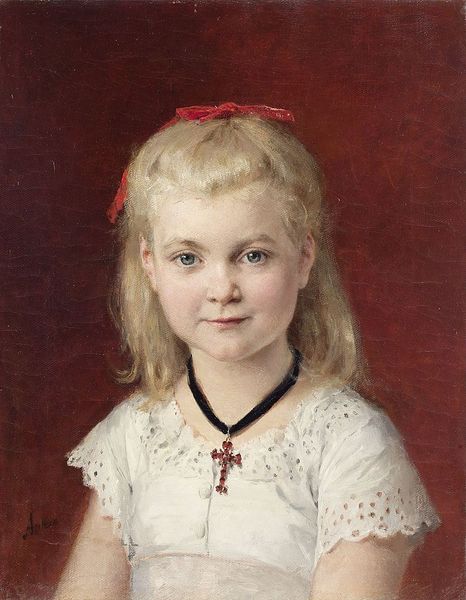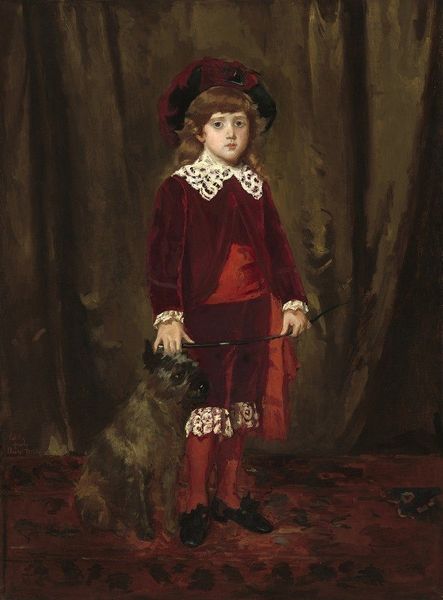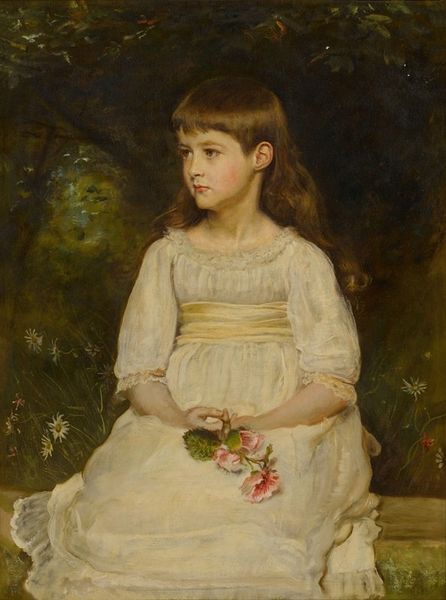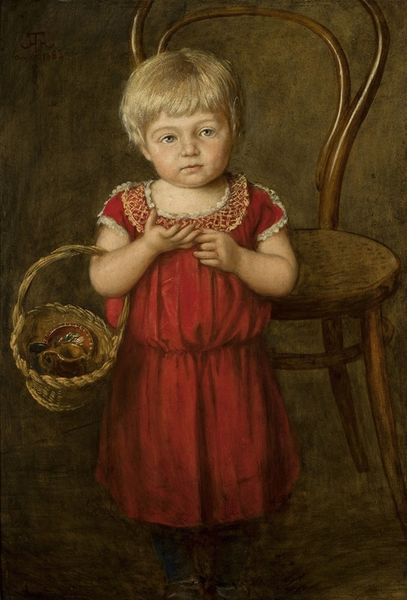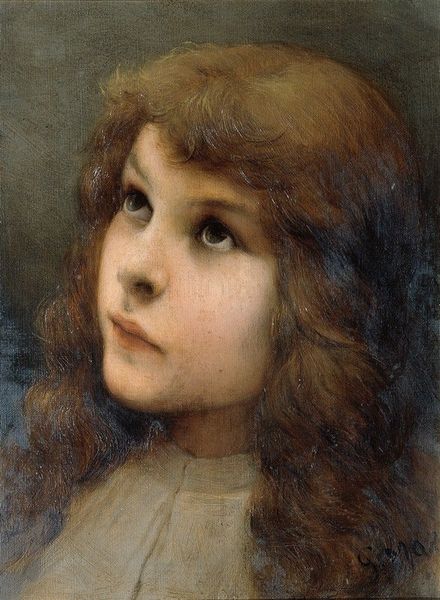
oil-paint
#
portrait
#
figurative
#
impressionism
#
oil-paint
#
figuration
#
oil painting
#
romanticism
#
genre-painting
#
academic-art
#
portrait art
Copyright: Public Domain: Artvee
Curator: What strikes me immediately is the textural interplay – look at the roughness of the background in contrast to the intricate detail of the girl's dress. Almost a study in opposites, wouldn't you say? Editor: Yes, there's a peculiar melancholy despite all the elaborate finery. It feels a bit theatrical, like a still from a play, or even an old photograph faded by time. Curator: Indeed. This piece, "Fille en costume", which translates to "Girl in Costume", is by Léon François Comerre. Comerre, working with oil on canvas, was very interested in depicting both the material wealth and also the child's presence with great realism in an increasingly industrial world. Editor: The fabrication of such a dress… I wonder about the hours spent by the dressmakers. The embroidery is quite arresting, what could be described almost as opulent! It reminds one of the labor involved in creating luxury. Curator: Exactly, consider how a single garment becomes a confluence of material extraction, manufacturing processes, and specialized craft—each thread a testament to unseen labor. And consider, too, the consumption patterns implied in the portrait. This girl may represent a certain class. Editor: Her dress is gorgeous but slightly overpowering for her young frame. It almost looks as if the clothes are wearing her, not the other way around! Do you notice how her expression hints at perhaps not wanting to have sat for this portrait? I also notice how the light creates interesting textures across her costume. Curator: Perhaps Comerre intentionally rendered the sitter in this way. A child adorned, almost burdened by material objects representative of lineage and legacy? Or it might point towards how such pieces showcased skill. It invites reflections on the very nature of portraiture at this point. Editor: Right. The social role of portraits themselves transformed radically because, within the last hundred years, there would be photographs doing something similar. What was Comerre trying to capture here then? Not likeness perhaps, but rather a feeling about childhood and society? It’s beautiful but poignant. Curator: Absolutely. In analyzing "Fille en costume", we uncover a convergence of labor, materials, and socio-cultural meaning—a window into the values of production, presentation, and also historical moment where skill in manufacture was a social symbol in and of itself. Editor: It’s remarkable how a seemingly simple portrait opens into these discussions about work, social hierarchy, childhood.
Comments
No comments
Be the first to comment and join the conversation on the ultimate creative platform.
